The Highs & Lows of Starting a Vineyard in Sardinia
A Vineyard Takes a Village: Our Sardinian Planting Story & Update
Happy Monday my Sip with Nik cru! I felt like today would be a good day to give you an update on our Sardinian vineyards. I also realized that I never published our vineyard planting story that lived on my old website. So, I’ve included some of that story below as well. Here we go:
Some of you may not know that in early 2023, we planted two vineyards in Sardinia, encompassing just over two hectares split between a mountain site and a valley site. Our multi-day vineyard planting extravaganza with family and friends was a long weekend that I will always cherish. Read on to discover some of that journey below.
The Planting Journey
Prior to planting our vineyards in Sardinia in February 2023, we had already spent years navigating Italy’s agricultural bureaucracy, which is extensive as anyone who has ever tried to do anything with the Italian government can testify. Before we could even break ground, we had to apply for a planting quota, specifying how many hectares, which varieties, and exactly how many vines of each variety would be planted. This process alone took a couple of years to complete. By the time we finally got the green light, we were eager to make it happen.
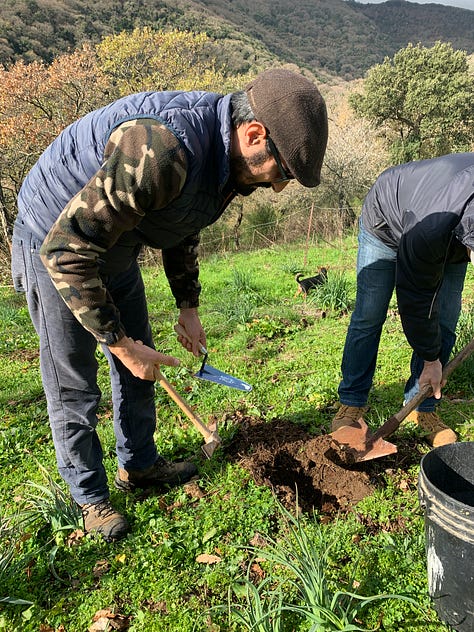
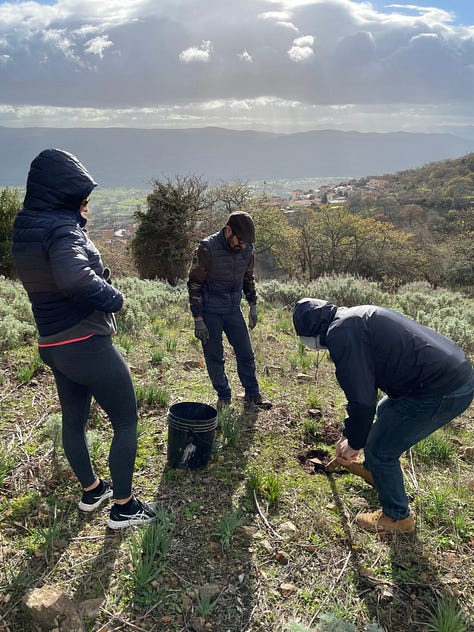
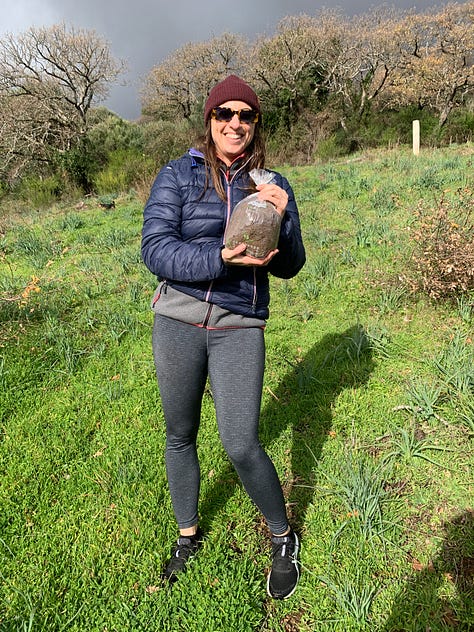
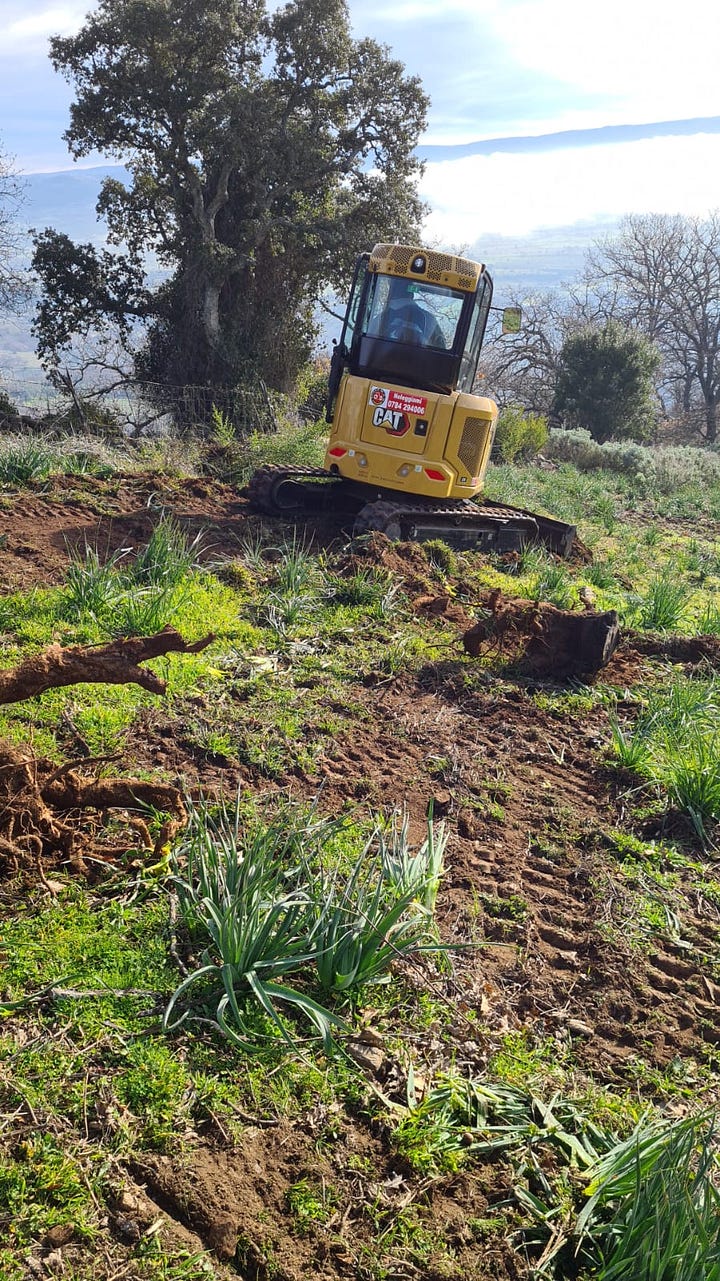
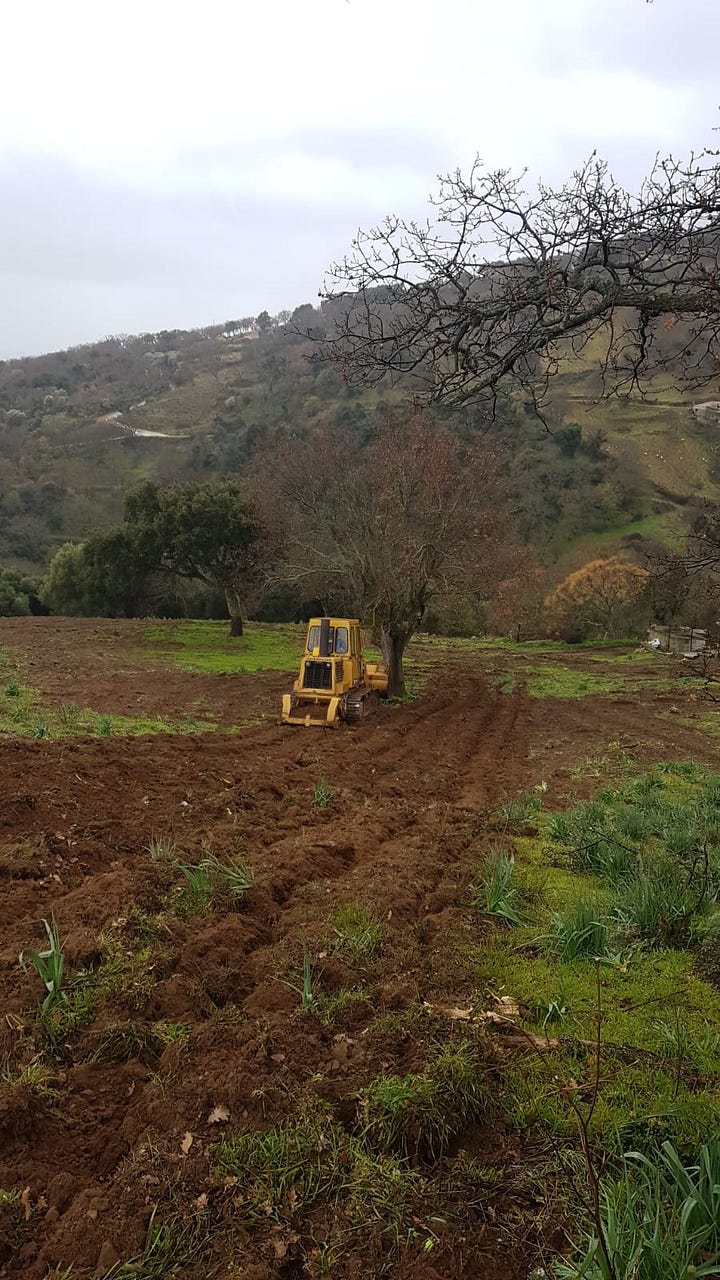
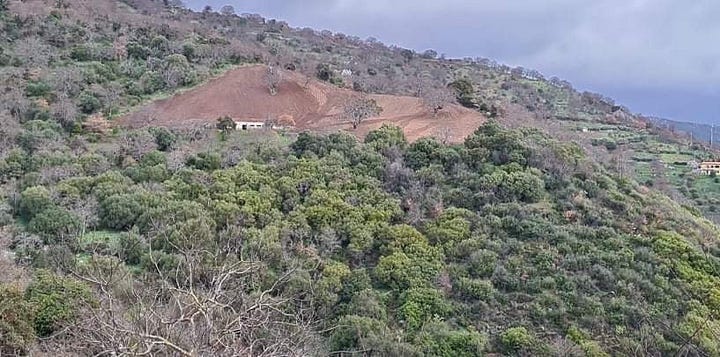
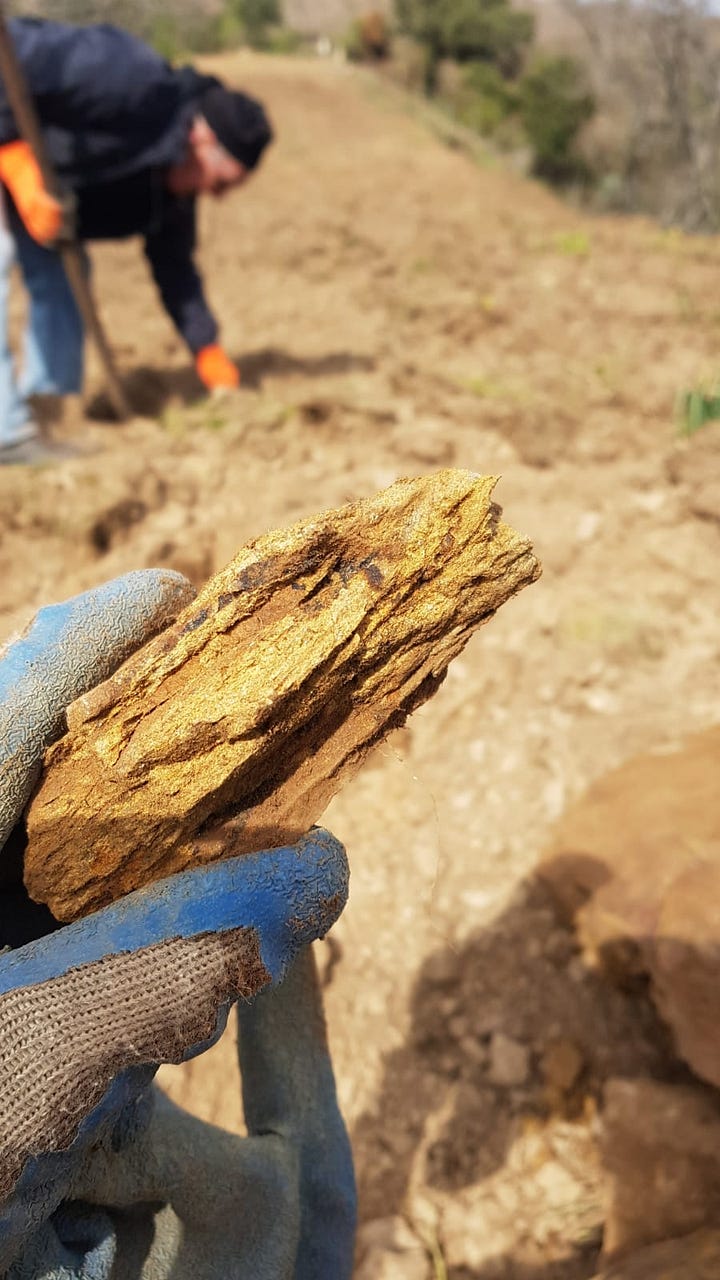
Once we got the official go ahead, we went around to select vineyard sites to collect canes that would be used by a nursery on mainland Italy to graft our chosen varieties onto American rootstocks for planting. This process had to be done at least a year prior to planting so they had time for the grafts to take during that growing season.
We selected three different biotypes of Arvesiniadu, the white variety we planted that’s currently undergoing somewhat of a revival in Sardinia. Marco would like our vineyard to be a reference site and resource for anyone who would like to plant Arvesiniadu in the future, or for studying the variety further. One biotype has a smaller, more compact cluster, another has a long and sparse cluster, and the third is somewhere in between the two. They each are planted in their own section of the vineyard so we can vinify them separately if we like as a little experiment to study their differences. We also selected Cannonau biotypes from different regions known for Cannonau production, but I need refresher from Marco on that.
I’ll be doing a deep dive into the varieties we planted in an April newsletter, so stay tuned for more details there.
Ok, back to the planting journey! We received the vines for planting covered in an organic wax that melts or falls away once the grafted vines are planted and have bud break. The vines needed to be kept in the dark at a cool temperature so they didn’t think it was spring and time to burst into action. They also came with really long roots that needed to be trimmed before planting. Yes, that’s right, we trimmed thousands of vines in preparation for planting.
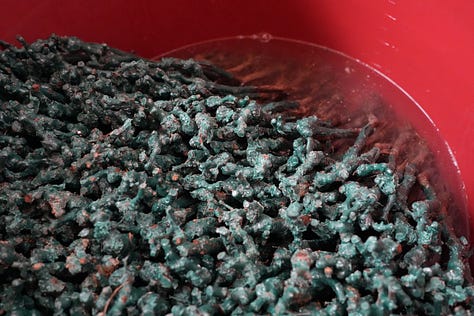

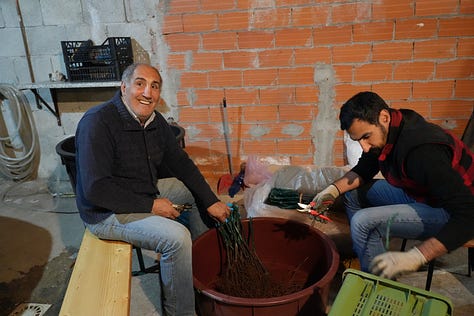

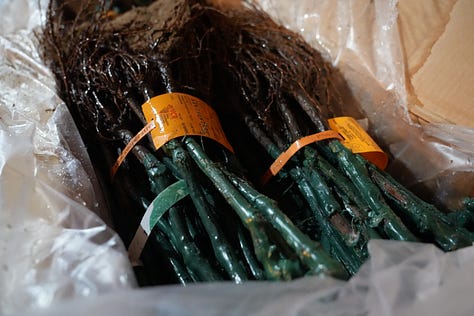
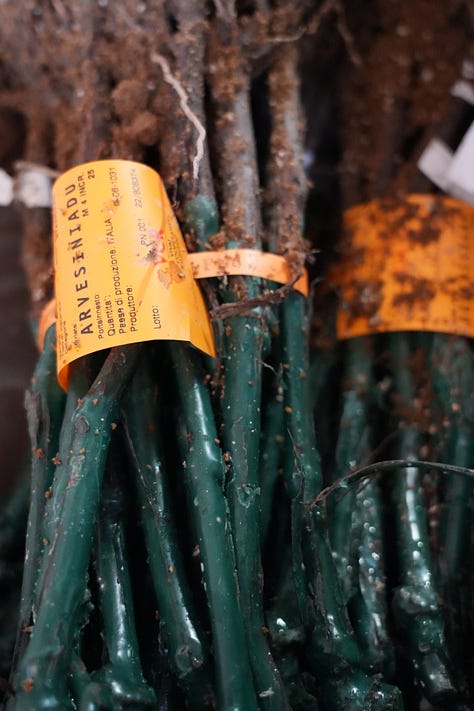
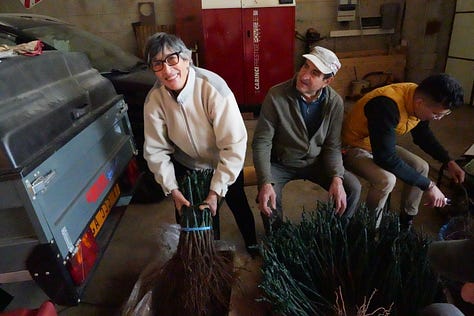
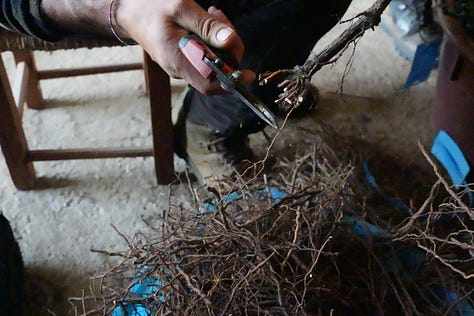
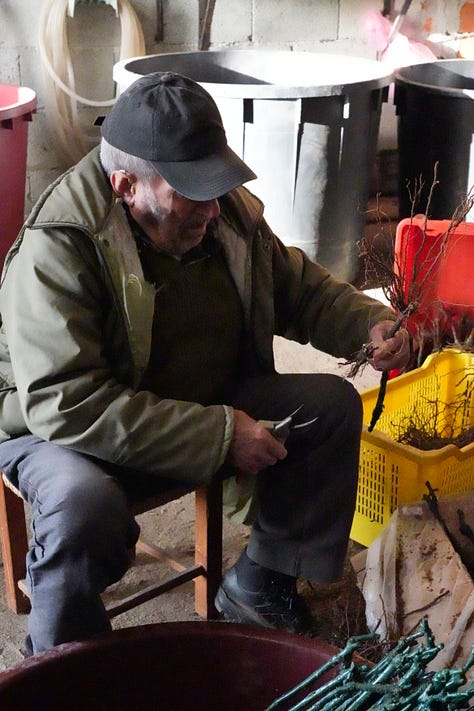
With the help of family and friends, we spent days preparing the terrain. A surveyor came to help plot the land and map out rows. Our friends who work in viticulture came to help plan the planting processing, measuring out the distances between rows and vines so when the time came to plant, everything was perfectly plotted and we only needed to use a long line with pre measured planting points to guide us on where to put the vines into the ground.
You can see what I’m talking about in the following photos. We planted both vineyards by hand using metal forks with handles and a footrest to press the vines into the ground.
Honestly, the planting weekend experience gave a whole new meaning to the phrase “it takes a village.”

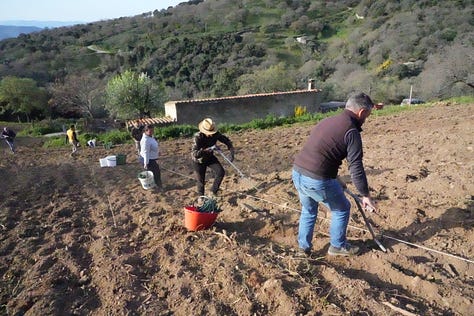

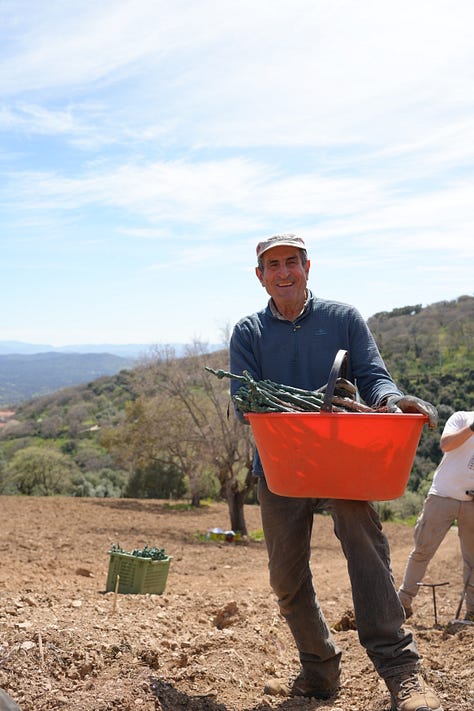
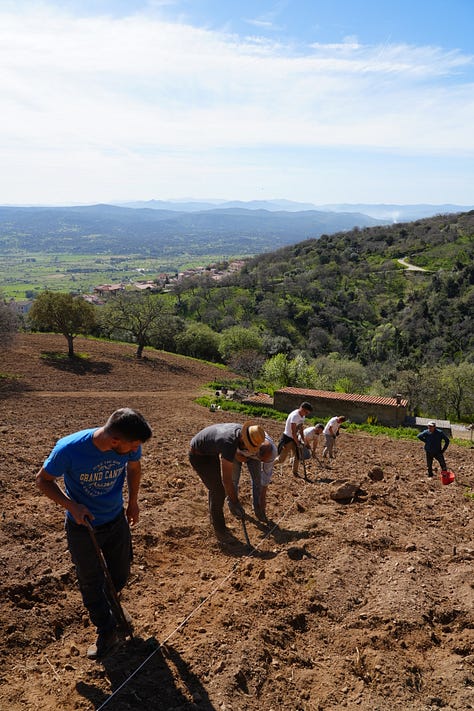
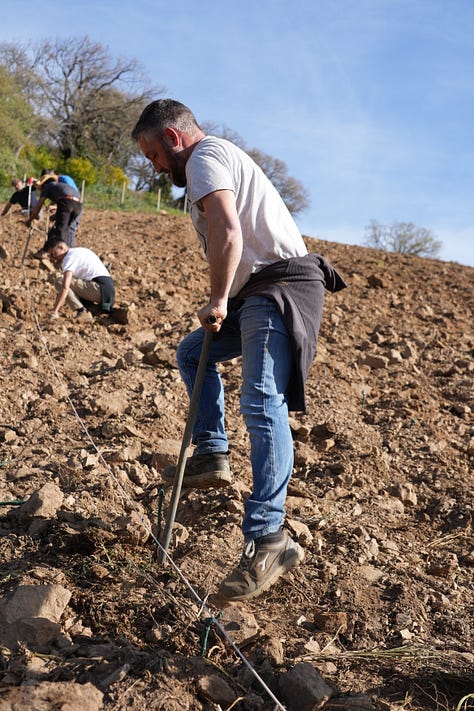
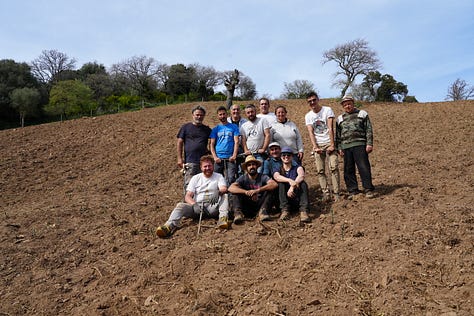
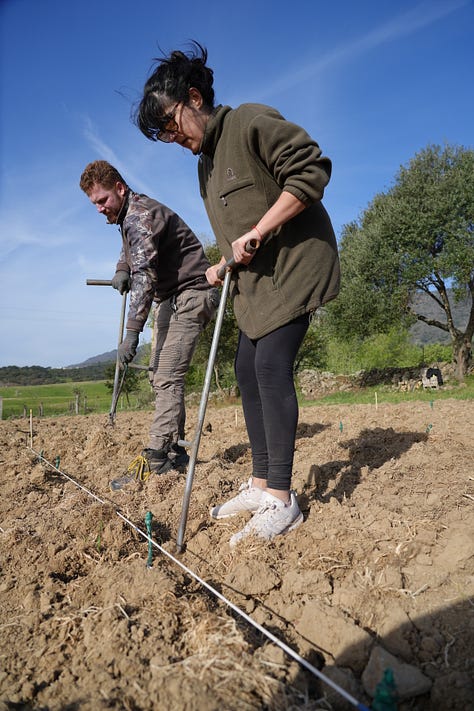
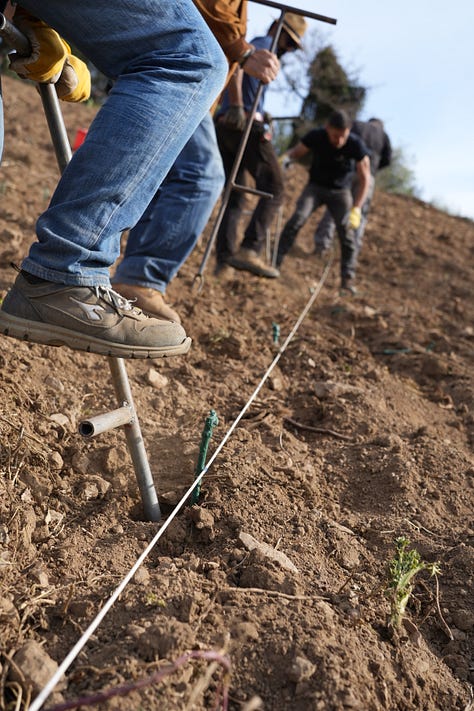
Our Vineyard Sites
Both of our vineyards are planted in Goceano near the village of Anela.
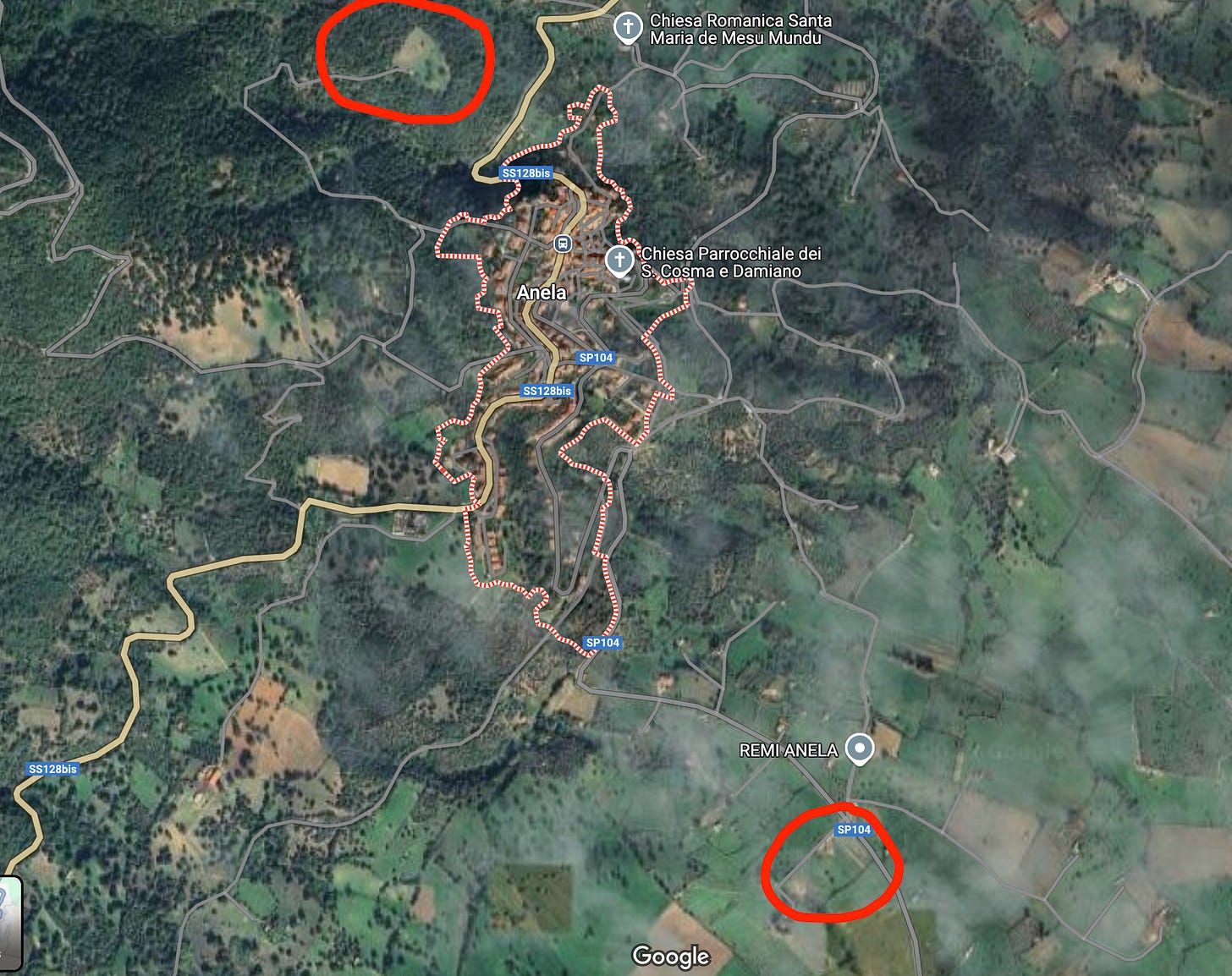
The mountain vineyard site, called Preda Ortu (rock garden), is where we planted a native white variety called Arvesiniadu. This site is a bit cooler, has excellent south/southeastern exposure, and a cooling wind that blows through daily, all of which we’re hoping will help preserve freshness.
Preda Ortu is a pretty spectacular site if I do say so myself. It’s shaped like an amphitheater and has a seriously steep slope, about 45°, which is ideal for drainage. The site really lived up to the name, as we spent weeks removing massive rocks from the vineyard, both before and after planting. We have enough rocks to make a wall around the entire vineyard! Soils here are diverse, but mainly schist. Vines here will be trained guyot.
Isteleviu, the valley vineyard site, is where we planted our reds – Cannonau, Bovale, Pascale, and Monica. Vines here will be head trained/bush trained, or in the albarello method as they say in Italian. This site lies on the valley floor and just has a bit of undulating hills. We have a mix of soils here, clay, decomposed granite, a bit of sand, etc. The problem here has proven to be drainage.
The Setback: A Vineyard Underwater
Fast forward to January 2024, when we returned to Sardinia after some necessary time in America for Marco’s green card, eager to check on our first year’s progress. What we found at the valley site was devastating: nearly half of our vineyard had drowned and Marco’s family failed to inform us while we were away.
The valley vineyard sits at the lowest point of a series of plots below Anela, meaning that after heavy rains, water naturally flows down from the mountains and pools there. A proper drainage system was critical. Unfortunately, despite our warnings, requests, and arguments, the solution that was implemented by family members (who insisted they knew best) failed when there were massive torrential downpours and flooding in 2023. The result? Our vineyard site flooded, and after one of the hottest growing seasons in recent history, many vines didn’t survive.
On top of that, last summer, the controlling agricultural agency came to inspect our vineyards while we were living and working in Napa Valley. They counted over 2,000 dead vines in the valley site alone. Without our agronomist present, there was no way to challenge the assessment. Though perhaps it was accurate. The result?
Pushing Forward
We had to replant every single one of those vines by July 2024 to keep our vineyard certified for production. Thankfully, we never shy away from hard work and in 2024 we replanted the necessary vines, some of which were simply American rootstock that we’ve since grafted with our chosen varieties.
Last year we were hard at work clearing the wild overgrowth between vineyard rows. Marco’s uncle donated his old 1950s tractor, which has been getting plenty of use—though not without some mechanical challenges (a good welder in the village has already become our new best friend). We spent a weekend manually hoeing around the vines to make space for pruning and grafting. It was exhausting, but necessary.
We’ve also implemented an interim solution for the drainage problem thanks to a generous neighbor with the plot above us. He allowed us to dig a drainage ditch along the southern border of his plot to mitigate any excessive water running down to our vineyards.
Lessons in Grit
People often say, “How exciting!” when they hear we planted a vineyard. And they’re right—it is exciting. But what they don’t always see is how grueling, unpredictable, and bureaucratically challenging this process can be, especially in Italy.
Still, we wouldn’t trade this journey for anything. The land, the vines, and the dream of creating something lasting keep us going. We’re learning, adapting, and determined to see this through. Because winemaking, at its core, is a constant act of perseverance while working in alignment with nature—and we’re just getting started.
Sardinian Vineyard Update as of March 16, 2025
As you may or may not know depending on whether you follow me on social media or not, Marco returned to Sardinia at the end of February to prepare our vineyards for the growing season ahead.
He spent the last couple of weeks pruning the vineyards with his uncle and his dad. The latter worked in the school of agriculture in Sassari managing their agricultural programs. So, he knows a thing or two about vines and plants of all sorts really.
Anyway, they went through with a first pass of long pruning, keeping at least 8-10 buds on the selected wood. Then, they’ll go through with a second pass to trim that down to 2-3 buds now that bud break is just about to kick off. This method is supposed to delay bud break a bit. There were a few cold nights over the past couple of weeks we were keeping an eye on and it has actually been raining quite a bit in Sardinia. But now the weather is looking consistently up in the coming weeks so all should be stable for bud break, fingers crossed.
(The second video is one of the graft vines on American rootstock.)
They’ve also been clearing even more rocks from the valley site now! And next, Marco will be putting in all the posts and trellising that we never got around to completing. So, stay tuned for that action. He’s aiming to have his friend that’s a surveyor come help plot everything out either this week or next. Then comes the painstaking work of putting the posts in and making sure they’re all properly aligned and attaching the trellising.
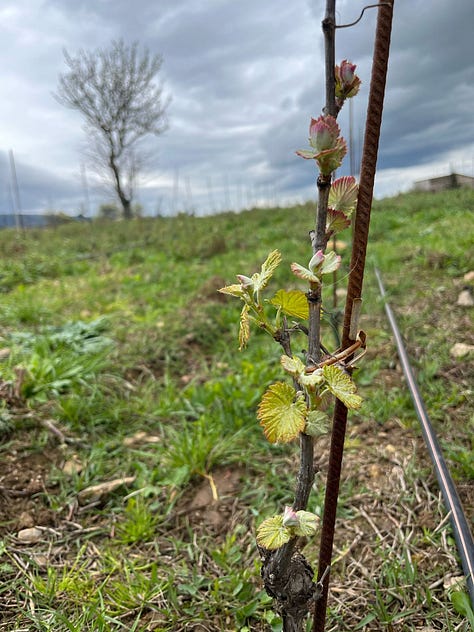
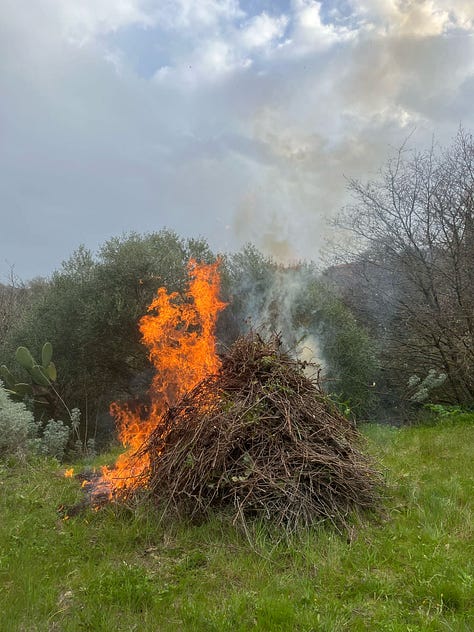
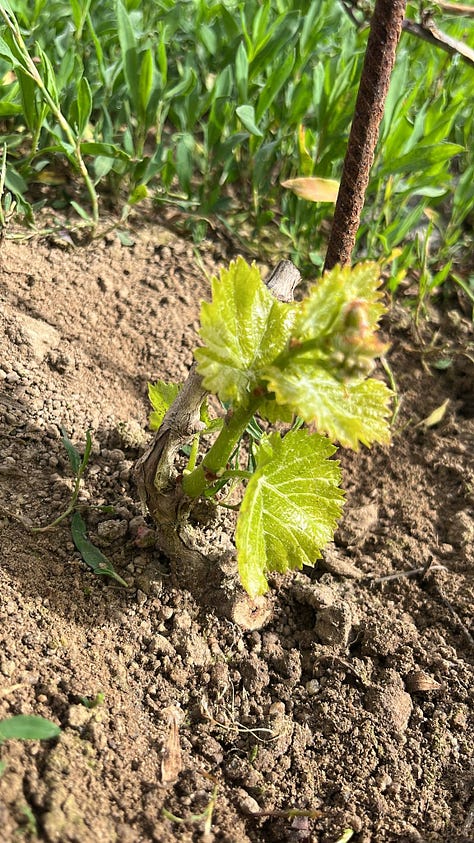
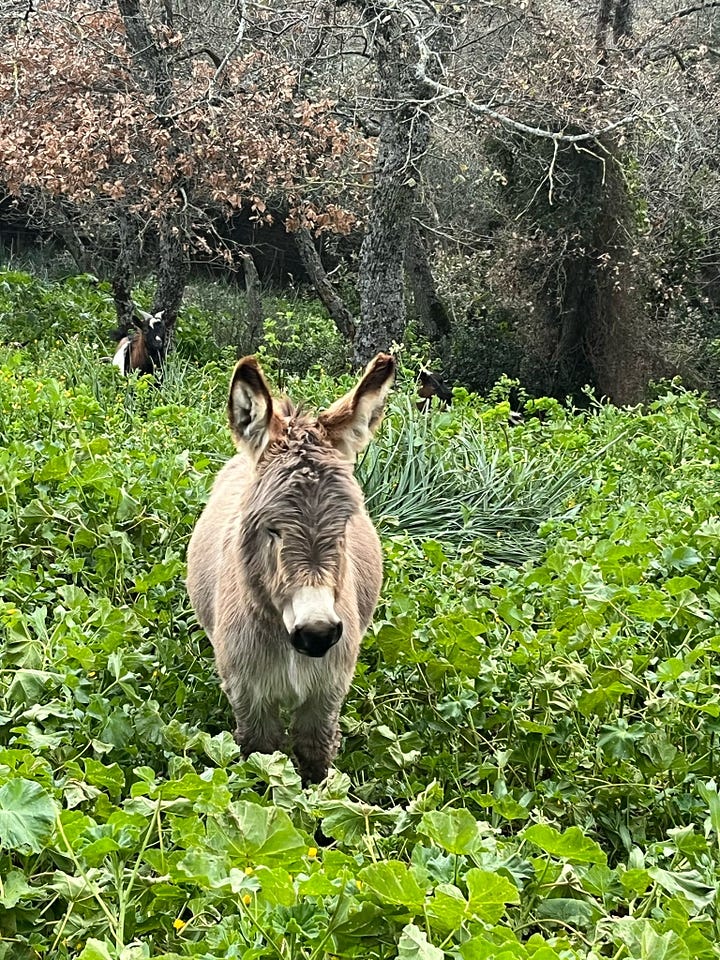
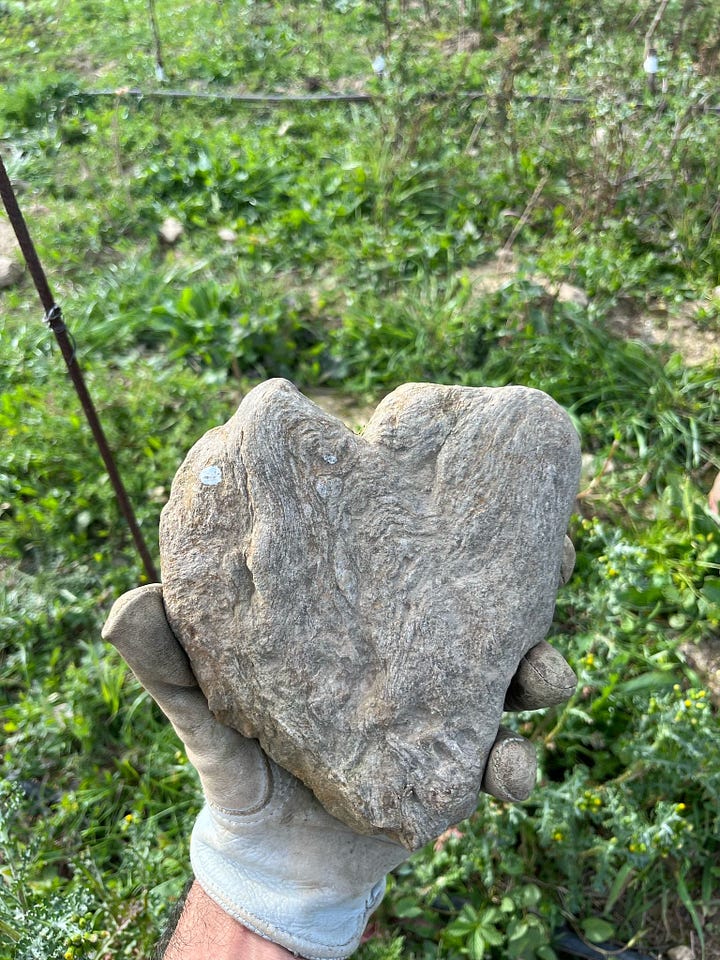
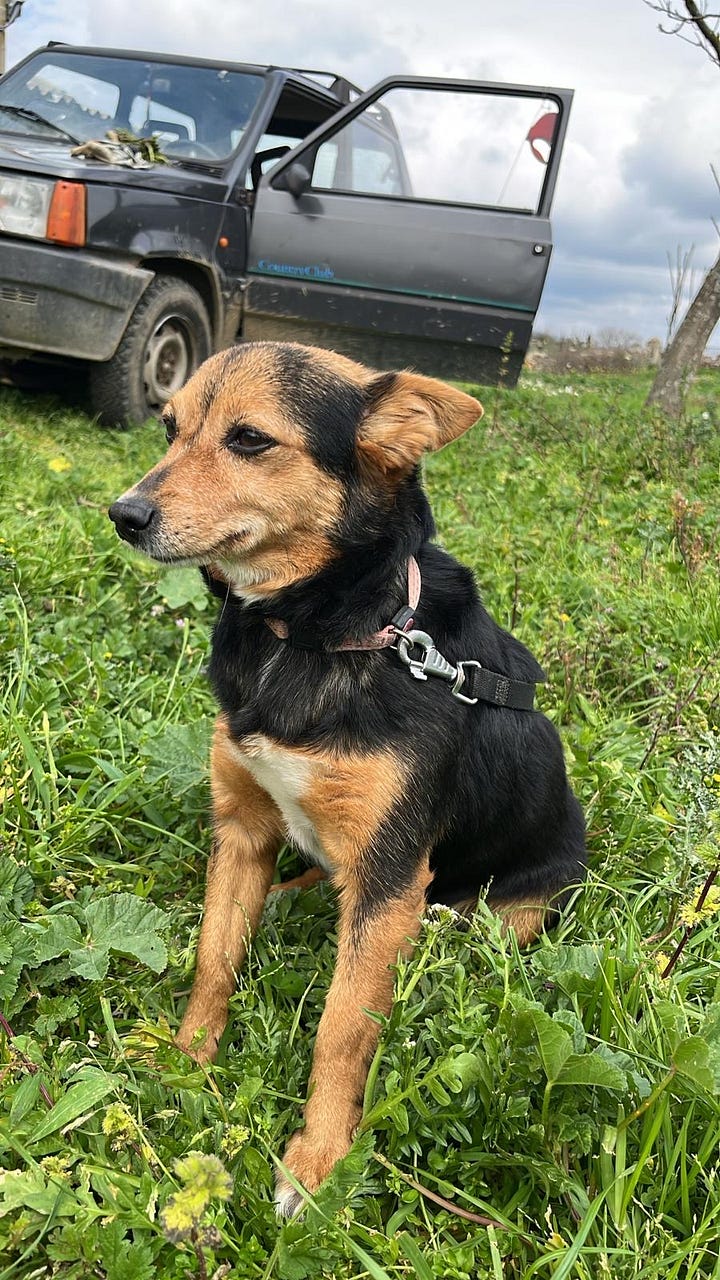
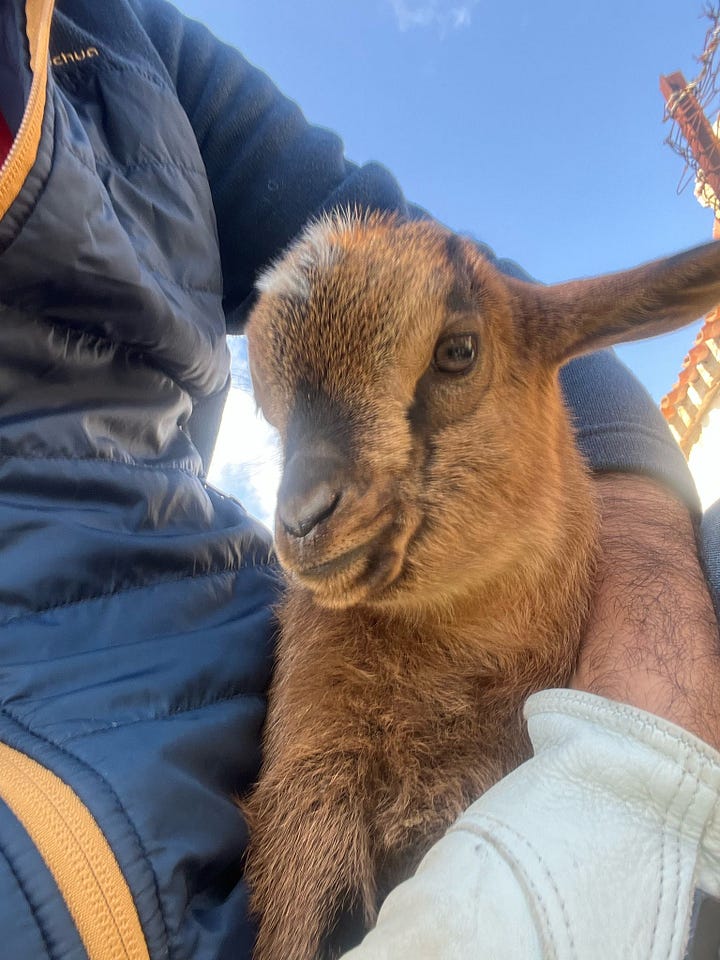
I was thinking (if I can convince Marco to do it), maybe it would be interesting for you guys to have a live Substack video from the vineyard and he can explain the pruning process in more detail or just give a virtual tour of the vineyard, etc.
If that’s something you’d be interested in, please vote below!
Also, if you have any questions on the process or want more technical info, drop your questions below in the comments. I’ll have Marco help me answer them as well because he’s got the vineyard know-how and a master's degree/life experience to back it all up.



Great update. I started a similar journey as you in Austria back in 2022. Question, did you have the soil analyzed for macro and micro nutrient levels? It was a fascinating and helpful part for me as I planted my first vines.
Quite an adventure! When do you anticipate your first wine?